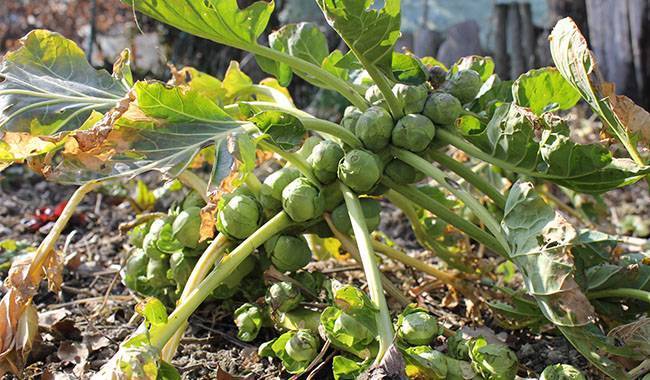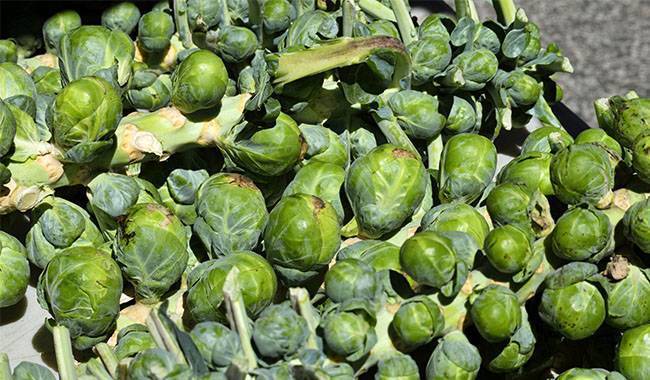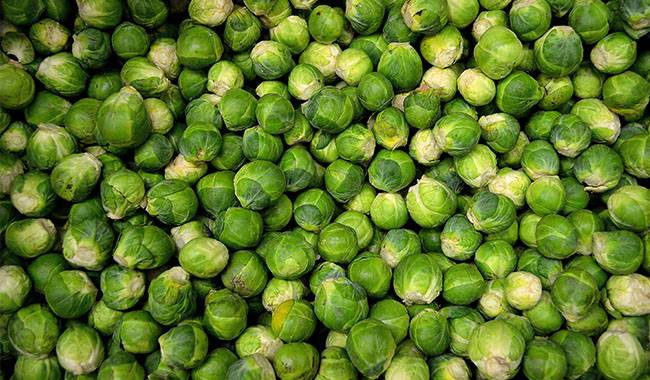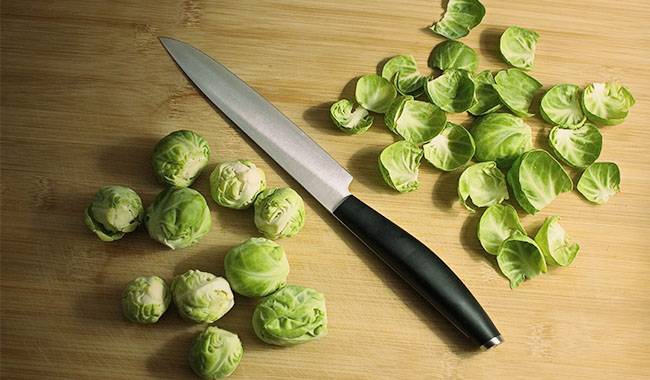
Native to the Mediterranean coast, it is widely grown in Europe and America.
Tips for growing brussel sprouts: Hold the seeds of kale like cool climate, the hardy, the suitable growth temperature is 50°F – 70°F.
The optimum temperature during the formation of leaflet bulbs is 60°F – 70°F during the day and about 50°F at night and grows best in seasons or areas where the temperature difference between day and night is 60°F-70°F.
Soil adaptability is wide, but fertile, humus-rich, water- and fertility-retentive neutral, and slightly acidic loamy soil is preferred.
Recommend you to read “What is the value of Brussel sprouts nutrition“
GROWING CONDITIONS
- Temperature: The most suitable temperature for its growth is 50°F-60°F. Try to keep the growing temperature around 50°F during the seedling period, it has a certain degree of hardiness, but it needs to be kept in a cool place in summer.
- Soil: It does not require a lot of soil, but it grows better in soil rich in humus. Use a mixture of garden soil and humus to prepare the soil.
- Sunshine: It likes to grow in shady places. When it is young, it should be covered with a black shade cloth during the daytime and uncovered at night, avoiding direct sunlight as much as possible.
- Fertilizer: In the process of breeding, you should give it nitrogen fertilizer after planting, and adjust the amount of fertilizer according to its growth, once every five days or so.
HOW TO PLANT
- Sowing seeds
Before sowing, water the soil thoroughly and plant 2-3 seeds in a spot sowing method after the water seeps down.
Keep the soil moist until the seedlings emerge (it is better to put them in the shade at this time), and you will see two heart-shaped cotyledons in a week or so, then move them to a sunny place. - Spacing of seedlings
When 2-3 true leaves grow, you can space out the weak seedlings, leaving only the healthiest and strongest seedlings in each container. - Soil cultivation
The kale plant is tall and has many small leaves and fruits, so it is easy to form the situation of head-heavy, so after fertilization, we need to add more soil at the root to prevent collapse (when sowing, the container can put less soil, so as to leave some space for future soil cultivation).
PLANTING
The age of the seedlings varies with the season, generally 40 days in early spring and less than 30 days in summer and autumn, when the seedlings have 5 real leaves on top, it is the best time for planting.
Before planting, we should apply sufficient fertilizer and prepare the land by regrading the soil before planting the crop.
Finally, we should apply manure, or if not, organic fertilizer, to the soil before planting.
When cultivating seedlings, we should try to keep the soil not too lumpy and not too scattered in order to protect the root system and promote the slowing down of the seedlings.
CARE
- Pruning
When it has small buds in the middle, it is time to remove the old leaves to facilitate ventilation and light penetration and to provide more concentrated nutrients for the development of the buds. - Propagation
The most common way of propagation is by sowing seeds, the best time to sow seeds is in August, cover with a thin layer of soil after sowing, water and keep the soil slightly moist at all times.
FERTILIZATION
The basic need to build a plant trellis, but its long growth cycle, fertilizer needs a lot, in addition to sowing before the application of sufficient fertilizer, but also need to fertilize 3-4 times, mainly with organic nitrogen fertilizer.
The first fertilizer: fertilizer in about 1 month after the emergence of seedlings, in order to promote plant growth.
The second fertilizer: the most fertilizer at the beginning of small leaf ball, in order to promote the development and expansion of small leaf ball.
The third fertilizer: fertilize when the leaflets are about to be harvested, so as to improve the yield.
The last two fertilizers can add some phosphorus and potassium fertilizers.

LEAF REMOVAL
When the middle of the stem of the plant to hold the kale to form a small leaf ball, the bottom of the old, yellow, sick leaves to remove, so as to reduce nutrient consumption, but also conducive to ventilation and light, to promote the growth and development of small leaf ball.
In addition, the leaflets grow in the axils of the leaves, the leaflets will slowly expand by the pressure of the petiole, so that the flattening, so in the process of growth, but also the leaflets next to the leaflets from the base of the petiole removed, to retain room for the growth of the leaflets.
Another point is that the lower part of the plant is stunted axillary buds, or has become loose leaflets, should also be removed early, so as to avoid the consumption of nutrients, or become aphid hiding places, to help improve production, but also to help control pests and diseases.
HARVESTING
The leaf ball starts from the bottom and gradually expands from the bottom up. When the leaflets are tightly wrapped, shiny and hard, and the diameter grows to 2~3cm, you can harvest them in turn from the bottom up.
Note that when harvesting, it is best to use a knife or scissors to cut off the leaflets horizontally from the base of the ball, which is better for the plant.
PROBLEM TREATMENT
- Diseases
Black rot is a common disease of kale, which is devastating to it and occurs in hot and humid weather, so use Bordeaux spray 3-4 times a week as soon as possible. - Pests
It is a common pest, often attached to the plant’s stems and leaves for gnawing, and can be killed with tweezers as soon as it is found.
PREVENT DISEASES
Kale is susceptible to downy mildew, soft rot, green worms, aphids, and other pests and diseases, and since we grow and eat them ourselves, we certainly don’t use phytopharmaceuticals.
So after each rain, you can spray the plants with chlorine dioxide effervescent tablets with water or irrigate the roots and water the soil, which can effectively prevent diseases.
You can also make your own green pesticides, such as chili garlic boiling water, soap solution or grass ash soaking liquid spray, which can properly prevent the production of pests.
FAQ
A: Can you eat it
Q: Kale can be eaten, it can be eaten as a vegetable, more common is fried or raw can be eaten, most people will be able to eat.
A: Can be raised indoors
Q: Yes, when raised indoors, you need to pay attention to frequent ventilation, it can not only be used for food but also can add a touch of green to the room, very practical.





